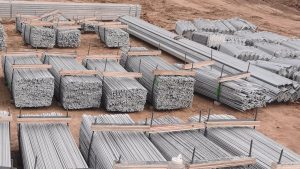- Lateral Load Resistance: Building bracing systems are primarily designed to resist lateral loads, which can push or pull on the building’s structure. These loads can occur during windstorms or seismic events.
- Stability Enhancement: Bracing enhances the overall stability of a building, preventing excessive lateral movement or swaying, which can be uncomfortable or even dangerous for occupants.
- Types of Bracing: There are several types of bracing systems, including diagonal braces, shear walls, moment frames, and eccentric bracing. The choice of bracing type depends on factors such as building design, local building codes, and anticipated loads.
- Material Selection: Bracing elements can be made from various materials, including steel, concrete, and wood. The material choice depends on structural requirements and design considerations.
- Strategic Placement: Bracing elements are strategically placed throughout the building to ensure that they effectively distribute and resist lateral loads. This placement is determined by structural engineers during the design phase.
- Architectural Considerations: Bracing elements can be integrated into the architectural design of a building, either as visible features or concealed within walls and partitions, depending on the desired aesthetics.
- Load Transfer: Building bracing systems transfer lateral loads from the building’s upper floors and roof to the foundation, ensuring that the building remains stable and safe.
- Seismic Resistance: In regions prone to earthquakes, seismic bracing systems are designed to provide additional resistance to lateral forces, helping the building withstand ground motion and seismic events.
- Wind Resistance: Bracing systems are also crucial for wind resistance, especially in tall or exposed buildings. They help prevent excessive sway and ensure the building remains structurally sound during high winds.
- Compliance with Building Codes: Building bracing systems must comply with local building codes and regulations, which specify design requirements and performance standards to ensure the safety of occupants.
- Connection Details: The connections between bracing elements and the rest of the building’s structure are critical for the overall effectiveness of the bracing system. Properly designed connections ensure that forces are transferred as intended.
- Maintenance: Building owners and managers should regularly inspect and maintain bracing systems to ensure their continued effectiveness. Any damage or deterioration should be addressed promptly.
- Design Flexibility: Structural engineers have the flexibility to design bracing systems that meet the specific needs of a building, taking into account factors such as building height, location, and anticipated loads.
- Fire Resistance: Depending on local regulations and building codes, bracing elements may need to be fire-resistant or protected with fireproofing materials to maintain their structural integrity in case of fire.



Reviews
There are no reviews yet.